
Hurtling through space at about 35 miles (56 kilometers) per second, Comet Siding Spring (C/2013 A1) swept closest to Mars on October 19, 2014. It swept extremely close to the planet, closer than any known comet in recorded history. Damian Peach and Rolando Ligustri are two of the astrophotographers who captured photos of the comet and planet. Aren’t these images beautiful? And it’s awe-inspiring to think we’re able to see such things now, when our ancestors never could!
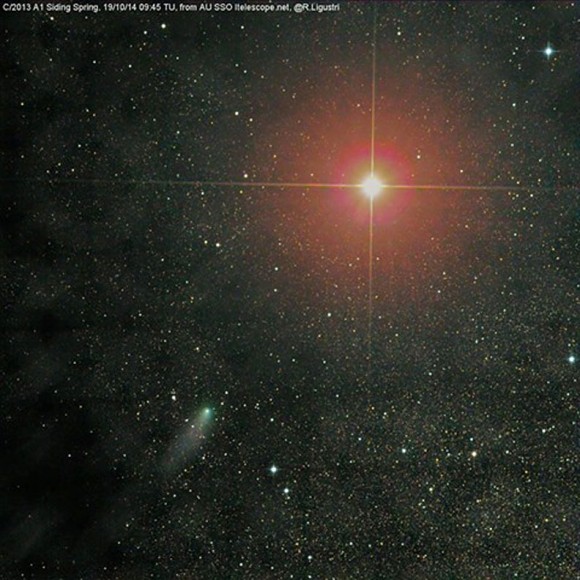
Five active spacecraft are currently orbiting Mars as well as the two active rovers on the Martian surface — NASA’s Opportunity and Curiosity. The orbiting craft – NASA’s MAVEN, MRO, Mars Odyssey – ESA’s Mars Express – and India’s Mars Orbiter – all were moved behind the planet as the comet swept past, and most have now sent back information that they were not damaged by dust and debris from the passing comet. After the comet passed closest, however, they did begin returning data in what proved to be an exciting day for space scientists and those of us watching.
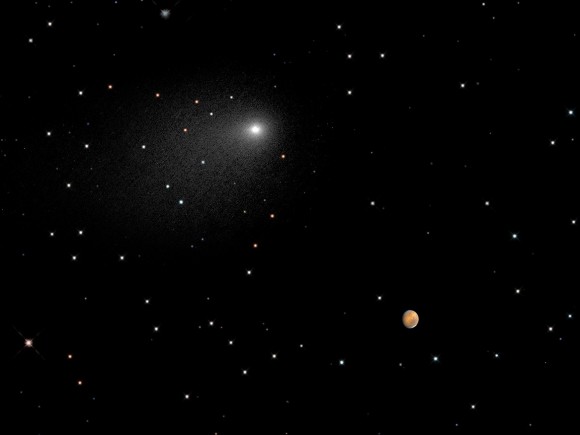
The image below is from the Virtual Telescope Project, which had been live-streaming the encounter online under what its operators described as “the most severe observing conditions ever seen at Virtual Telescope.” The comet was at only 15 degrees above the horizon, in a twilight sky. Plus they were battling clouds. But they managed to get the image below, of the fuzzy comet approaching the bright Red Planet. Read more about the image below here.

Poor sky conditions – and the location of both Mars and the comet low in the twilight sky – also inhibited ESA’s Optical Ground Station, equipped with a 1-meter telescope, on Tenerife, Canary Islands. But that station managed to acquire the image below. Read more about the ESA image, below, here.
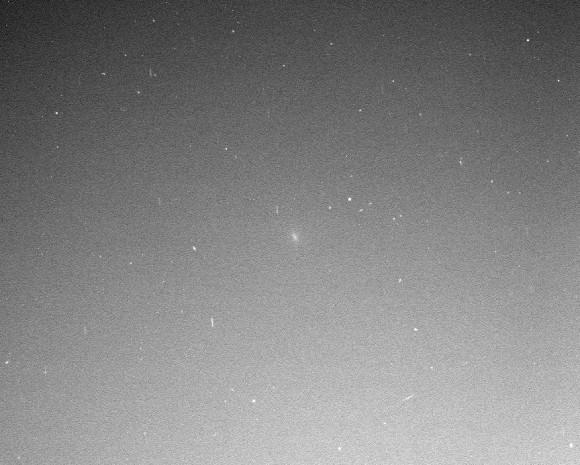
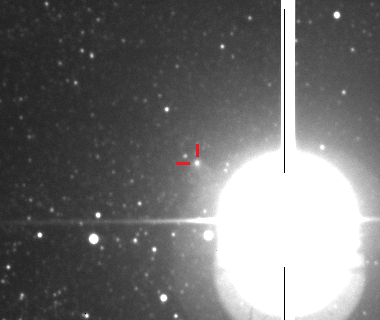
The images below comes from the High Resolution Imaging Science Experiment (HiRISE) camera on NASA’s Mars Reconnaissance Orbiter. NASA said:
The images are the highest-resolution views ever acquired of a comet coming from the Oort Cloud at the fringes of the solar system. Other spacecraft have approached and studied comets with shorter orbits. This comet’s flyby of Mars provided spacecraft at the Red Planet an opportunity to investigate from close range.
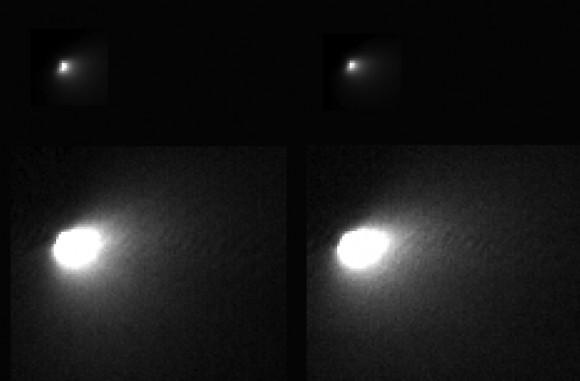
Image via NASA/JPL-Caltech/University of Arizona. Read more about this image.
There will be more to come, especially from the spacecraft near Mars, and also some sun- and Earth-orbiters, over the coming weeks! Watch this space.
Bottom line: A sight never seen before in recorded history … a comet swept close to Mars on October 19, 2014. Best photos so far, here.











